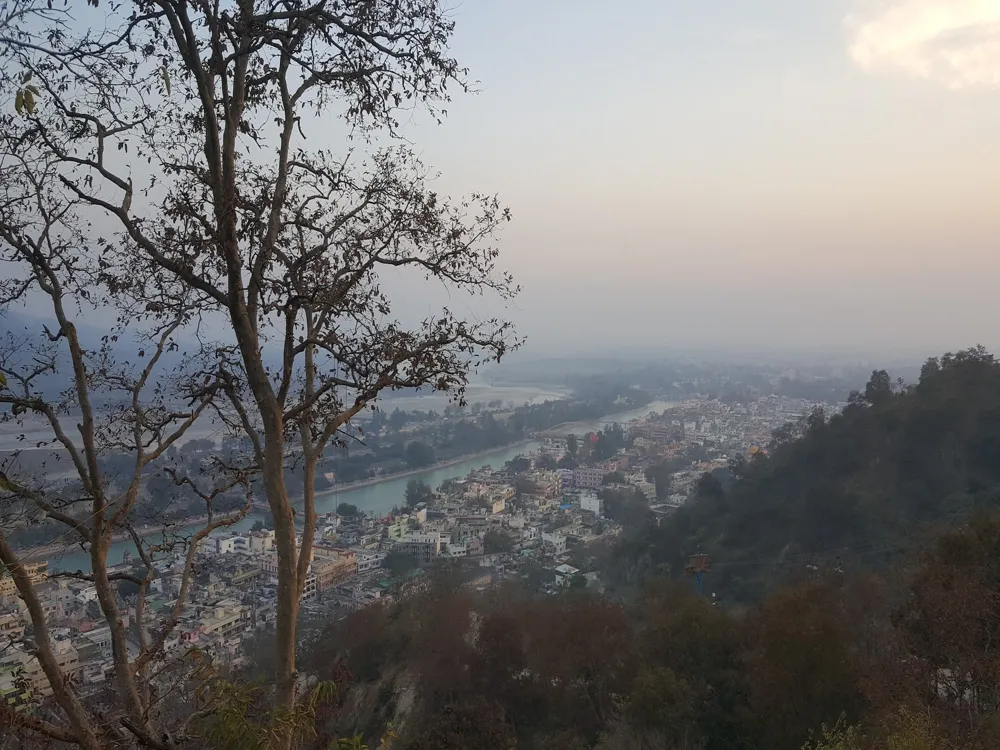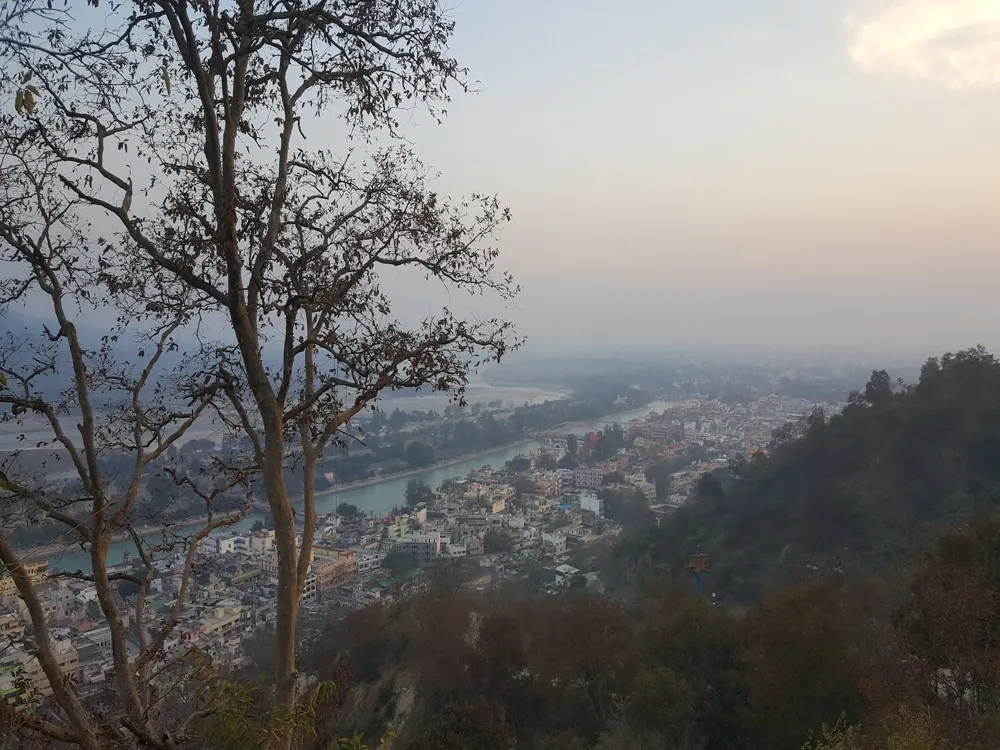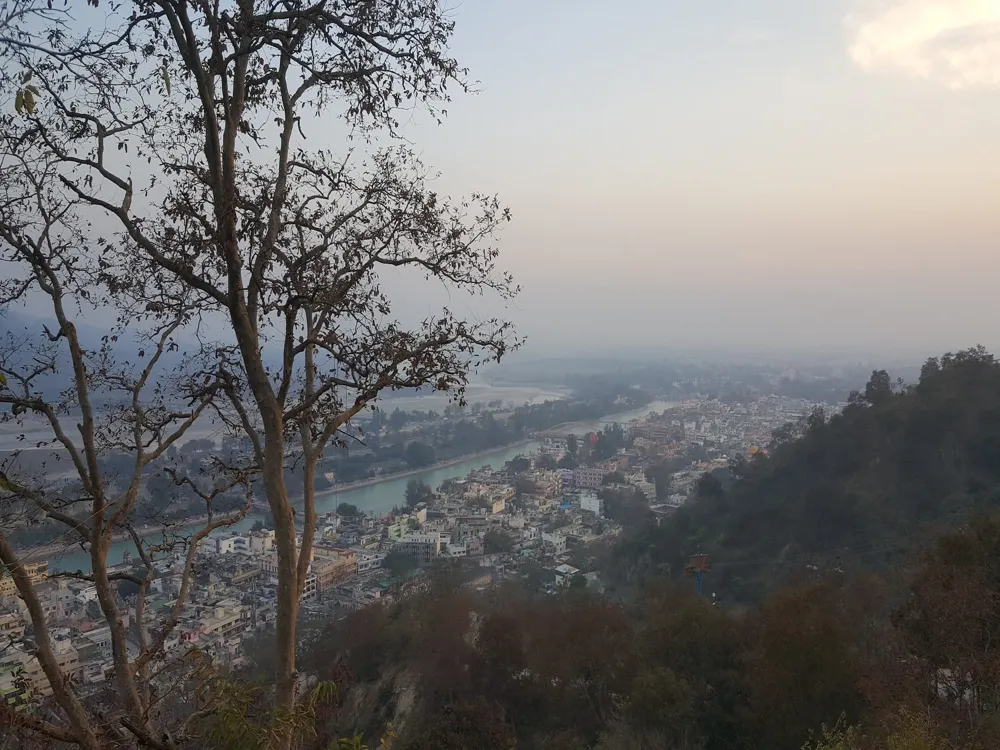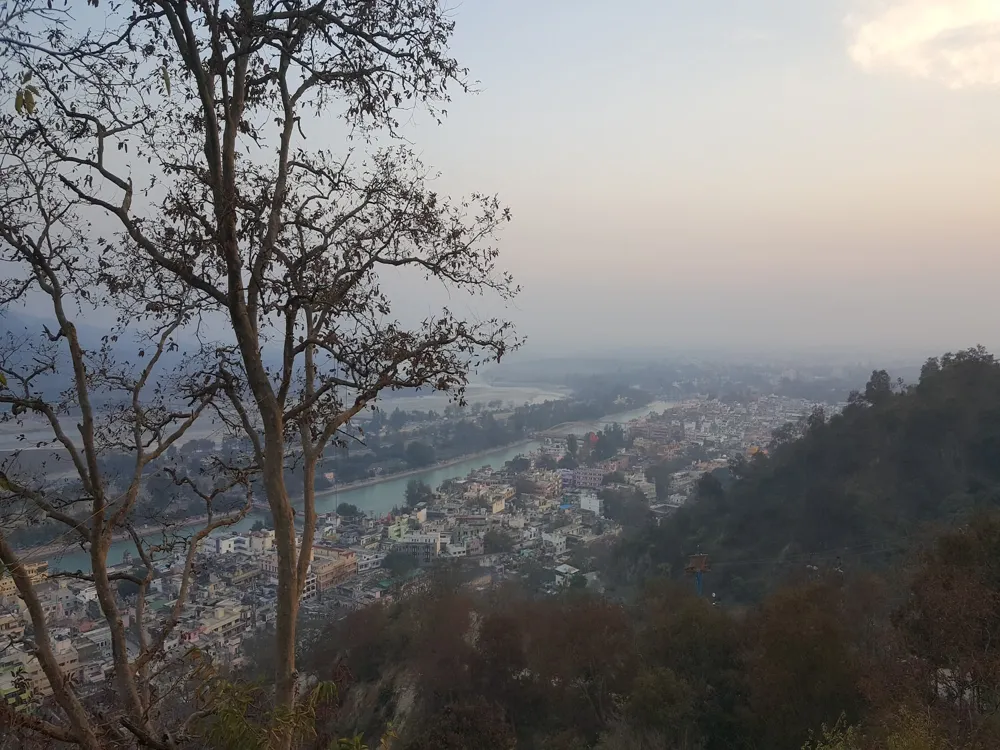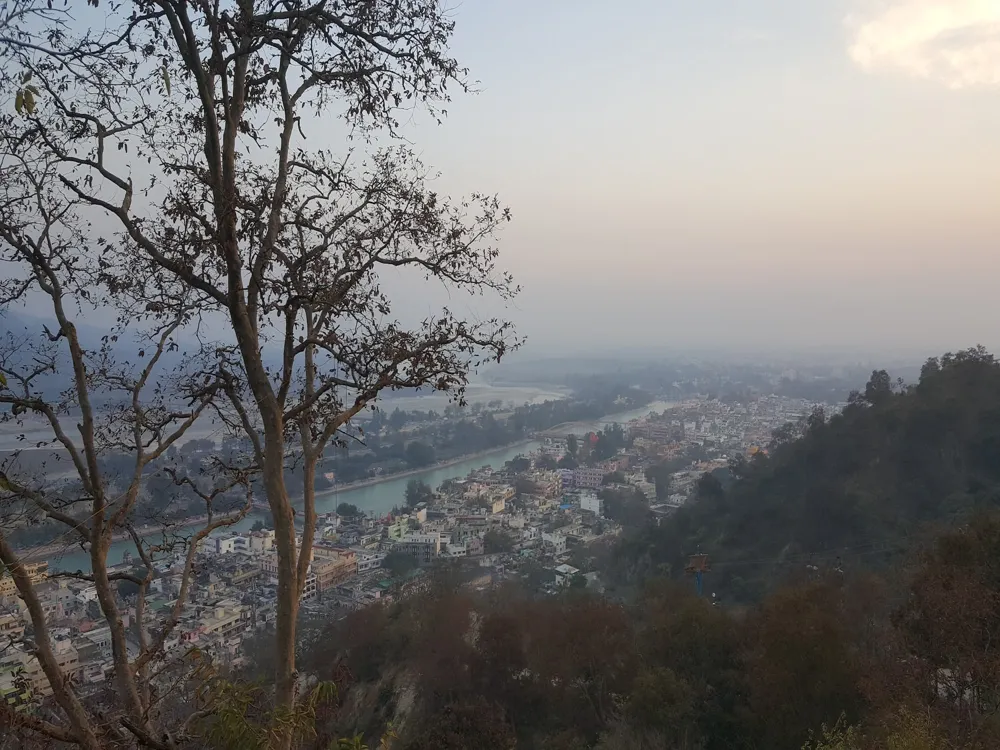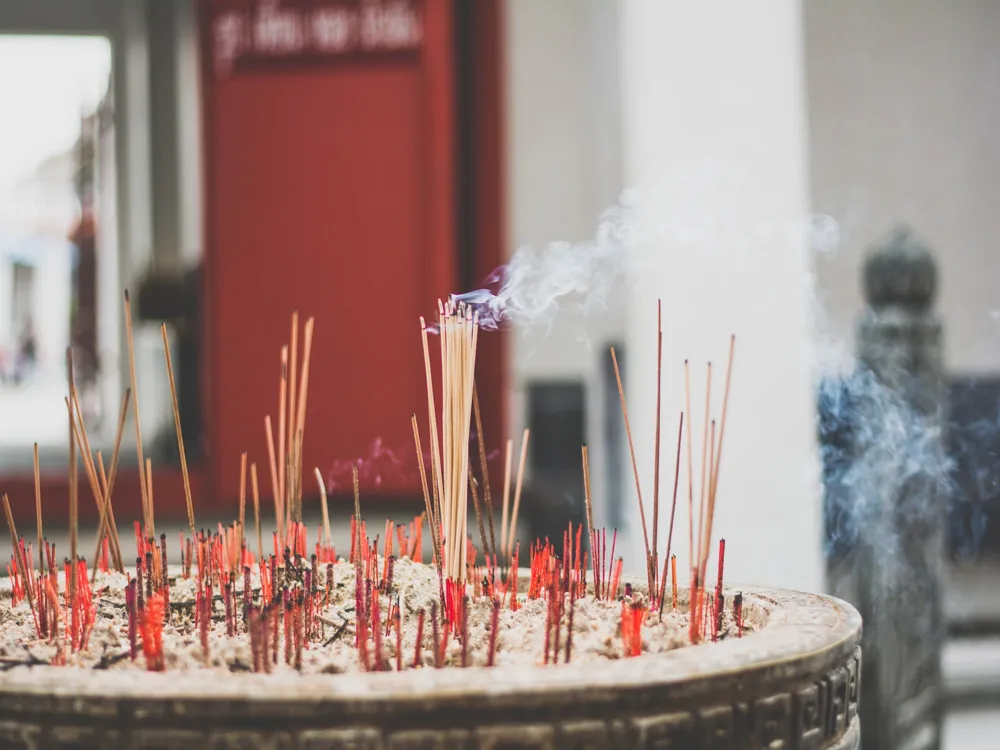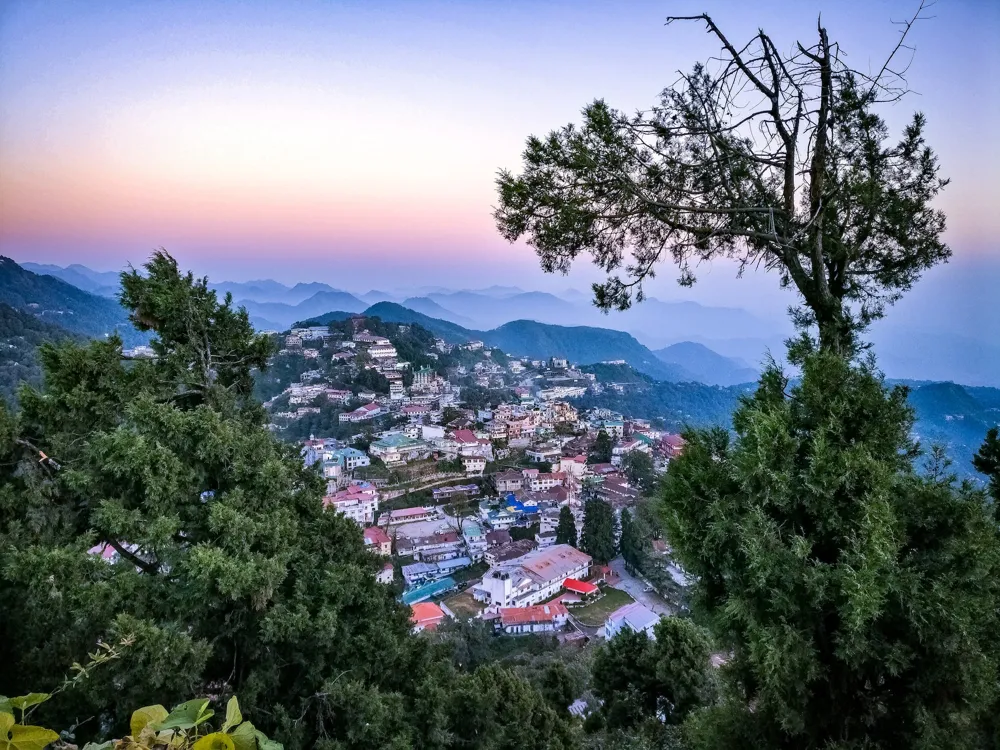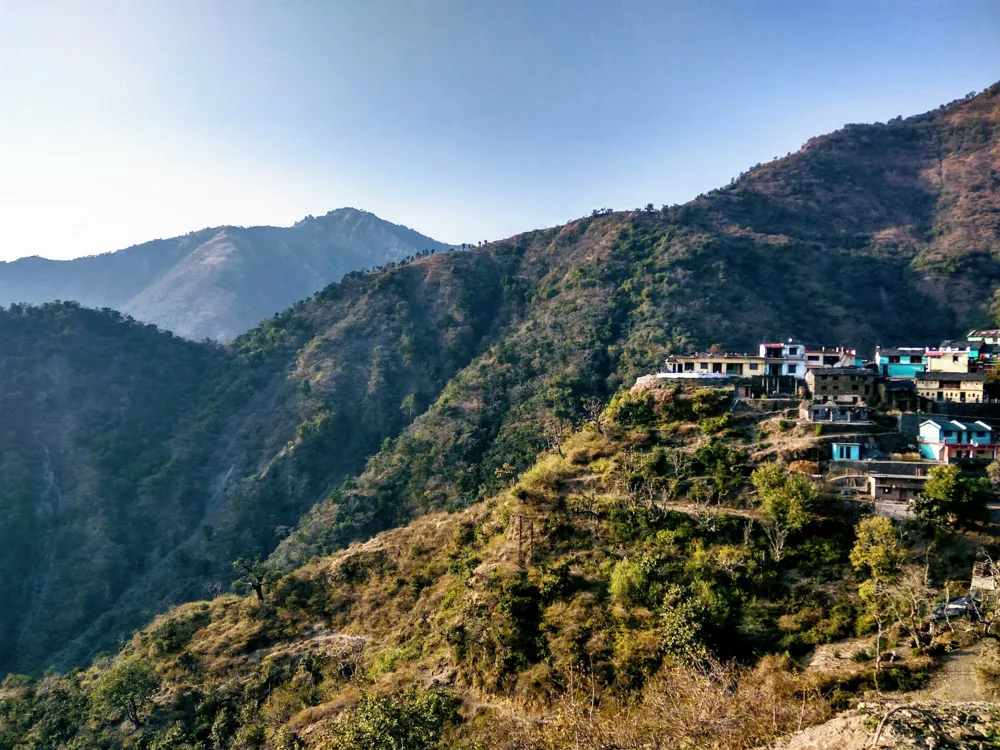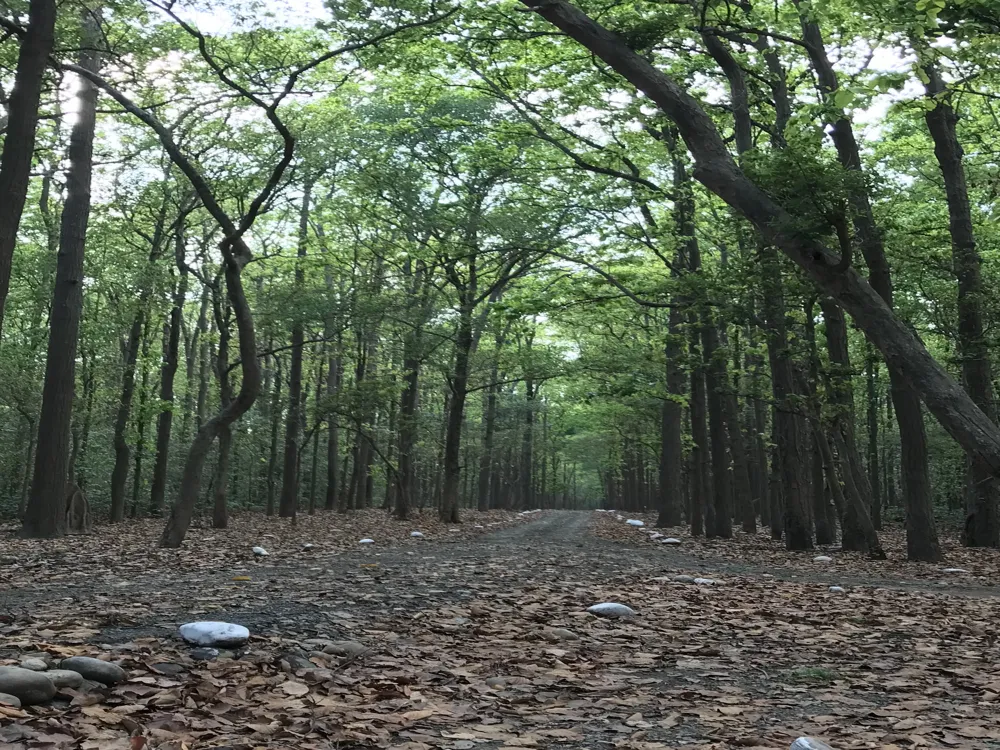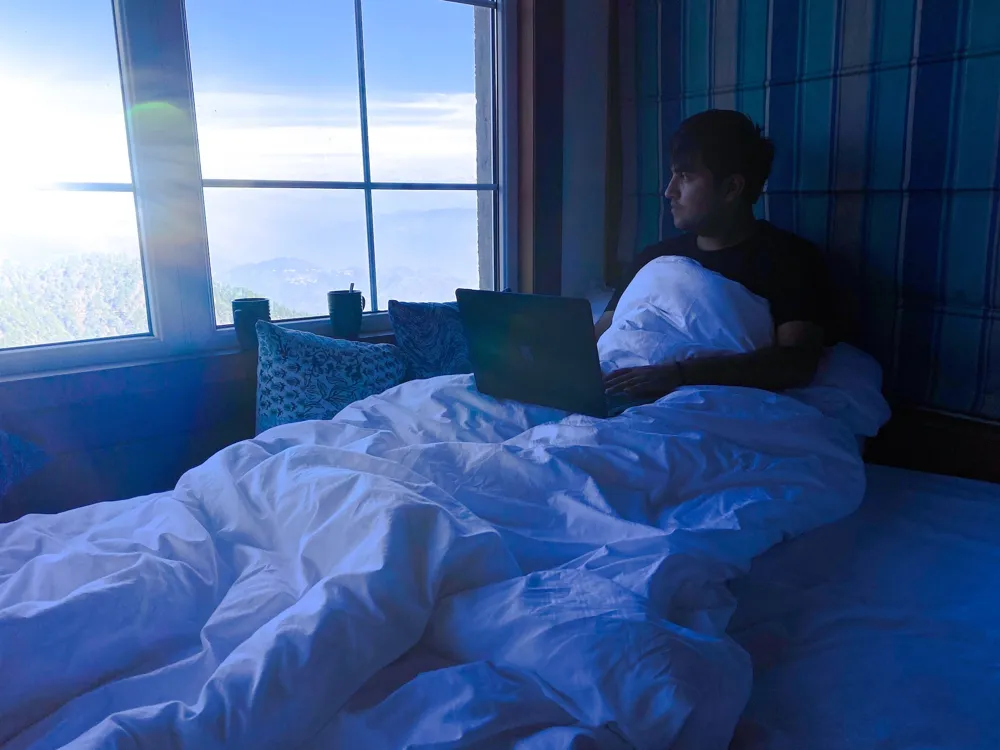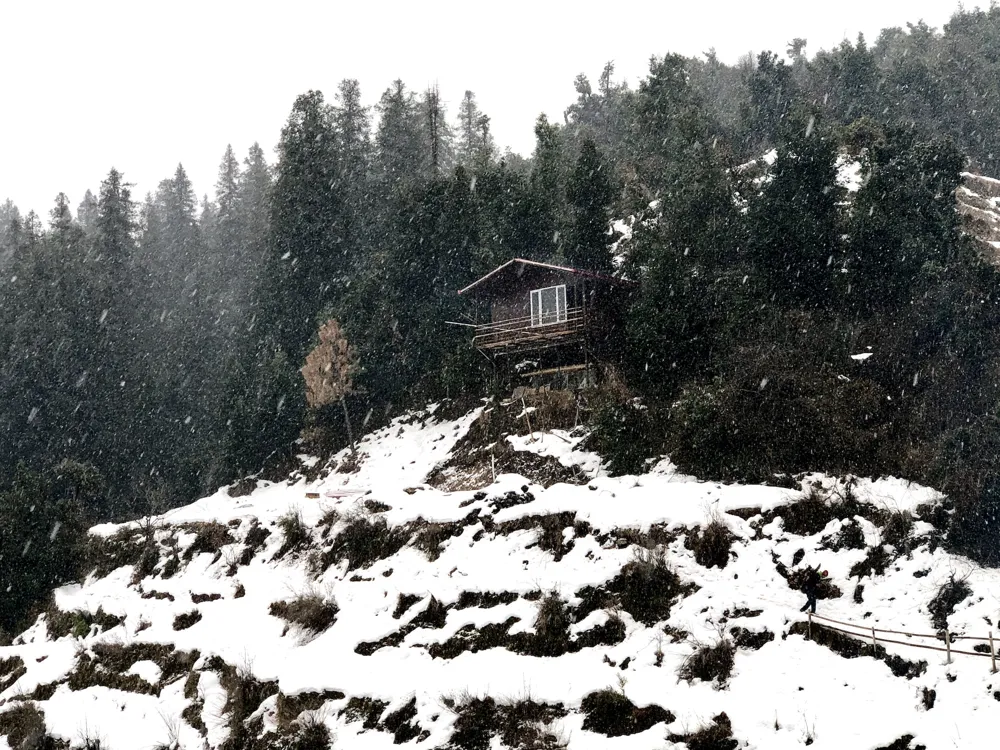Mansa Devi Temple, a significant spiritual destination in Haridwar, Uttarakhand, stands as a beacon of Hindu faith and cultural heritage. Perched atop the Bilwa Parvat, part of the Shivalik Hills, the temple is dedicated to Goddess Mansa Devi, believed to be a form of Shakti, emanating from the mind of Sage Kashyap. The temple's name, 'Mansa', suggests the deity's ability to fulfill the wishes of her devotees, a belief that draws thousands of pilgrims every year. This ancient temple, steeped in legends and mythology, is part of the Panch Tirth (Five Pilgrimages) within Haridwar and is also a significant stopover in the Char Dham Yatra circuit. The history of Mansa Devi Temple dates back centuries, intertwining with the rich tapestry of Hindu mythology and the sacred river Ganges flowing nearby, adding to its spiritual significance. The scenic beauty surrounding the temple, with lush greenery and panoramic views of Haridwar, further elevates the spiritual experience for visitors. Every year during the Navratri festival, the temple witnesses a surge in devotees. The festival celebrated twice a year, marks a period of intense worship and fasting, with special pujas and rituals dedicated to Goddess Mansa Devi. The temple's unique tradition of offering coconuts, fruits, and garlands to the deity, along with the practice of tying threads to the temple walls by devotees, symbolizes their prayers and wishes waiting to be fulfilled. Mansa Devi Temple is not only a testament to spiritual beliefs but also stands as a significant marker of the region's culture and traditions. The temple's role in local festivals, and rituals, and its impact on the daily lives of the people in Haridwar is profound, making it an integral part of the social and cultural fabric of the region. The architecture of Mansa Devi Temple is a splendid example of ancient Indian artistry blended with intricate design elements typical of Hindu temple architecture. Built-in the typical North Indian style, the temple features a main sanctum sanctorum housing the idol of Goddess Mansa Devi, flanked by two lion statues, a symbol of strength and protection in Hindu mythology. The temple's structure is adorned with a multitude of carvings, frescoes, and statues that depict various deities and scenes from Hindu mythology. The intricate designs on the pillars, walls, and ceilings of the temple are reflective of the craftsmanship and artistic skills of the artisans of the time. The temple's facade is particularly noteworthy, with its multi-tiered, onion-shaped dome, a characteristic feature of North Indian temple architecture. A unique aspect of the temple's design is its amalgamation of natural elements into its architecture. The temple is strategically positioned to offer panoramic views of the Ganges and the surrounding mountains, creating a tranquil environment for worship. The use of local stone and other materials in its construction not only adds to its aesthetic appeal but also reflects the temple's harmonious relationship with its natural surroundings. The inner sanctum of the temple, where the deity resides, exudes a divine aura, with its gold-plated walls and intricate carvings. The idol of Mansa Devi, adorned with fine jewelry and colorful attire, sits majestically, attracting devotees from across the country. The temple's design facilitates a seamless flow of pilgrims, ensuring a spiritual and orderly experience for visitors. Over the years, the temple has undergone several renovations and expansions to accommodate the growing number of pilgrims. These modifications have been carefully executed, ensuring that the original architectural essence and spiritual ambiance of the temple remain intact. The Mansa Devi Temple stands today not only as a place of worship but also as a shining example of Indian architectural brilliance and religious significance. Visitors are advised to dress modestly, keeping in mind the temple's religious sanctity. Traditional Indian attire is recommended, although comfortable and conservative Western clothing is also acceptable. It's important to avoid revealing outfits as a sign of respect for the temple's cultural and spiritual environment. Mansa Devi Temple typically opens at sunrise and closes after sunset, with specific timings for various rituals and aartis. Visitors should check the temple schedule in advance and plan their visit accordingly to participate in these spiritual ceremonies. Photography may be restricted in certain areas of the temple, especially inside the sanctum sanctorum. Visitors should respect these rules and seek permission before capturing photographs or videos on the temple premises. The climb to the temple can be strenuous for some. Elderly visitors or those with health issues should take the cable car. It's also advisable to stay hydrated and carry water, especially during the summer months. Visitors should observe and respect local customs and traditions. This includes participating in rituals with reverence, maintaining cleanliness, and following the temple's guidelines during their visit. Mansa Devi Temple in Haridwar is well-connected and can be easily reached by various modes of transportation. The nearest airport is the Jolly Grant Airport in Dehradun, about 35 kilometers away. From there, taxis or buses can be taken to reach Haridwar. For those traveling by train, Haridwar Railway Station is the nearest, well-connected to major cities in India. From the railway station, one can hire a taxi or an auto-rickshaw to the temple. For local visitors or those staying in Haridwar, the temple is accessible by road. Buses, taxis, and auto-rickshaws are readily available throughout the city. An intriguing way to reach the temple is by the Udan Khatola, a cable car service that offers a scenic and less strenuous route to the temple, providing breathtaking views of Haridwar and the Ganges. Read More:Overview of Mansa Devi Temple, Haridwar
Architecture of Mansa Devi Temple, Haridwar
Tips When Visiting Mansa Devi Temple, Haridwar
Dress Appropriately
Temple Timings and Rituals
Photography Rules
Health and Safety
Respect Local Customs
How To Reach Mansa Devi Temple, Haridwar
Mansa Devi Temple, Haridwar
Haridwar
Uttarakhand
NaN onwards
View haridwar Packages
Weather :
Tags : Temple
Timings : 5:00 AM - 9:00 PM (Closed for lunch at 2:00 PM),
Aarti - 5:30 AM
Time Required : 2-3 hrs
Entry Fee : No entry fee
Planning a Trip? Ask Your Question
Haridwar Travel Packages
View All Packages For Haridwar
Top Hotel Collections for Haridwar

Private Pool

Luxury Hotels

5-Star Hotels

Pet Friendly
Top Hotels Near Haridwar
Other Top Ranking Places In Haridwar
View All Places To Visit In haridwar
View haridwar Packages
Weather :
Tags : Temple
Timings : 5:00 AM - 9:00 PM (Closed for lunch at 2:00 PM),
Aarti - 5:30 AM
Time Required : 2-3 hrs
Entry Fee : No entry fee
Planning a Trip? Ask Your Question
Haridwar Travel Packages
View All Packages For Haridwar
Top Hotel Collections for Haridwar

Private Pool

Luxury Hotels

5-Star Hotels

Pet Friendly


